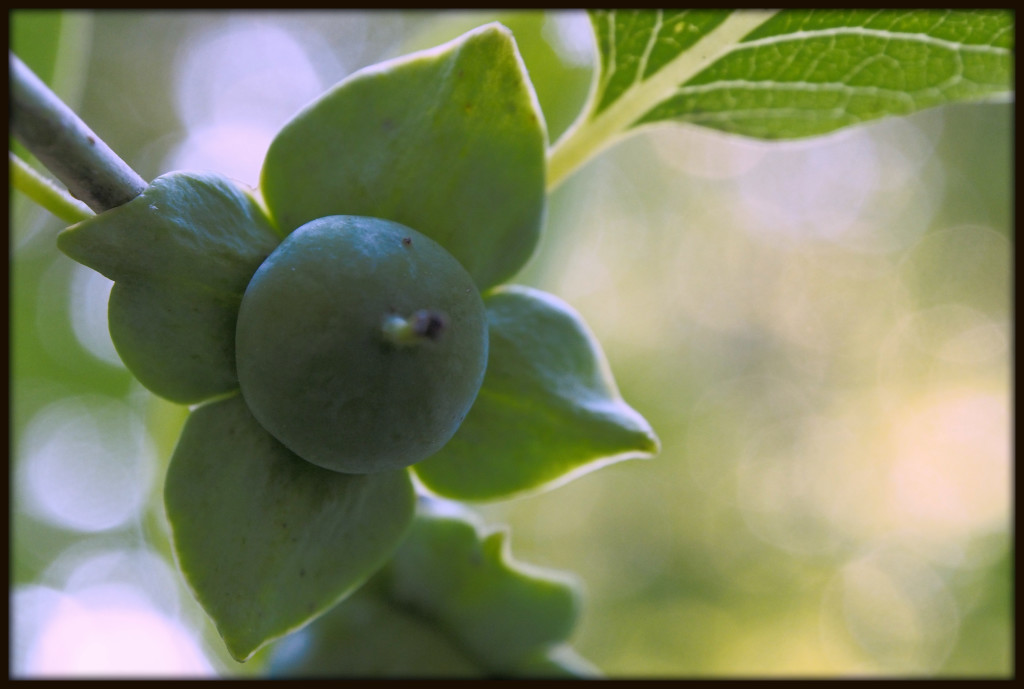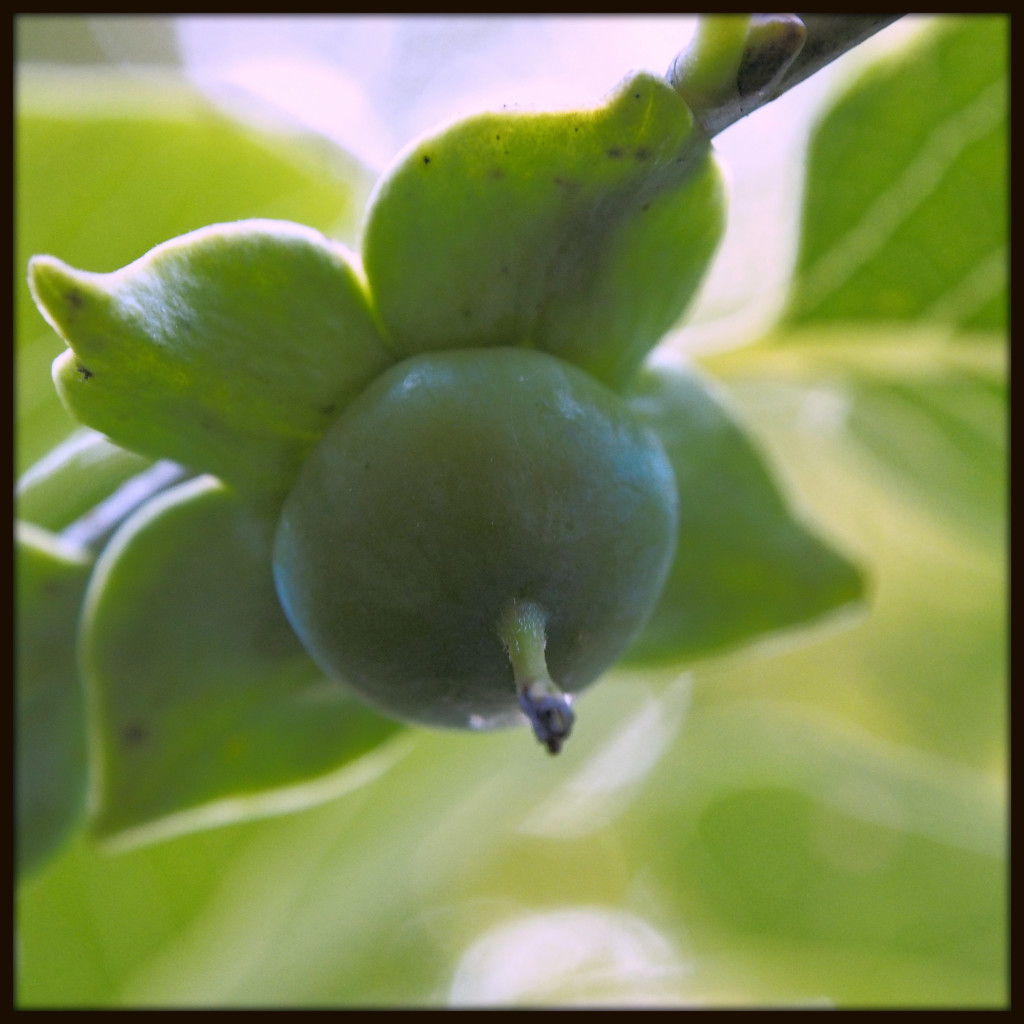Below are three photographs from my morning saunter through the fog along Piney Woods Church Road….
Into the Fog

The Old Tulip Poplar

Two Cedars

Below are three photographs from my morning saunter through the fog along Piney Woods Church Road….
Into the Fog

The Old Tulip Poplar

Two Cedars

I photographed this seed head of a Two-Flowered Cynthia (Krigia biflora) on my morning walk today. Even though the flower is past bloom, and most of the seeds have blown away, it enchants me still.
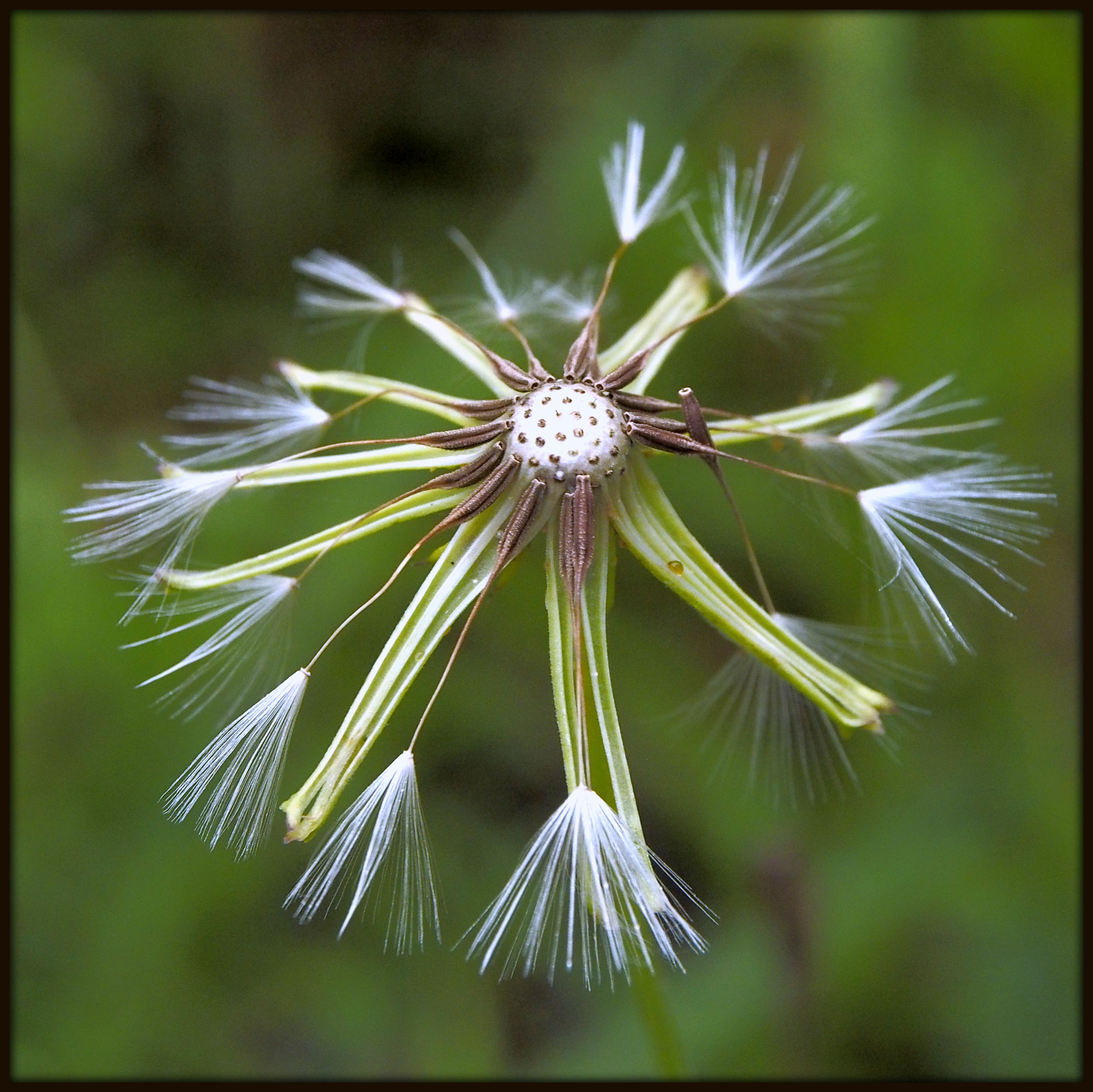
Over the past few months, since the trees have come into leaf along Piney Woods Church Road, I have been noticing Evidence for Elves. As I glance at the saplings of sweetgum and tulip poplar that line the roadway, I can quickly find a dozen leaves with holes in them, and fascicles (bundles) of loblolly pine needles suspended from each hole. Clearly, something has been putting a lot of energy into using pine needles as needles, poking holes in leaves with them and then letting them hang suspended, like a half-hearted attempt at an Andy Goldsworthy sculpture. The prosaic explanation, of course, is that the wind dislodges the pine needles from high up in the trees, and the velocity they obtain as the fall due to the acceleration caused by gravity is sufficient for them to pierce holes through any leaves they might encounter on their downward trajectory. The result is mysterious in a relatively subdued way — hardly akin to Stonehenge, and not overly photogenic, for that matter (the image below is my best attempt). Still, I find the windfall model entirely unsatisfying. It is far too prosaic. I much prefer the image of elves wandering the countryside, bored because no one believes in them or pays attention to them anymore, filling their spare afternoon hours by poking holes in leaves with bundles of needles, leaving their handiwork behind as a sign of their passage.
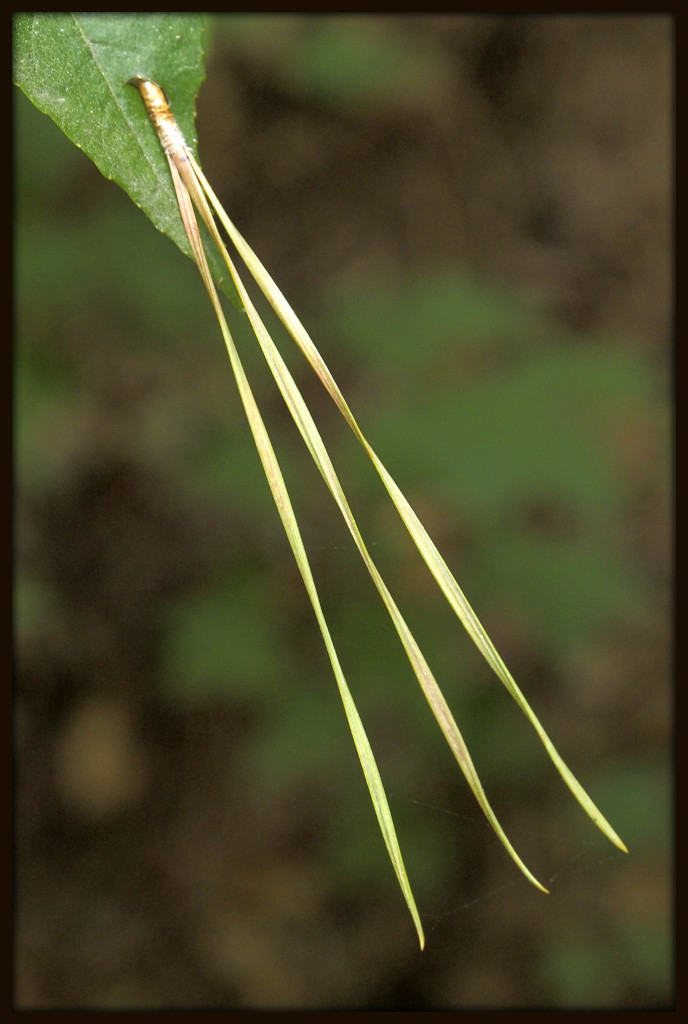
One of my first sights, upon entering a patch of woods adjacent to the wetlands at Newman Wetlands Center, was of an adult five-lined skink (Plestiodon fasciatus), a common species of lizard that is quite abundant on our back patio this time of year.

Along the first stretch of boardwalk, I encountered this red ant resting on the railing.
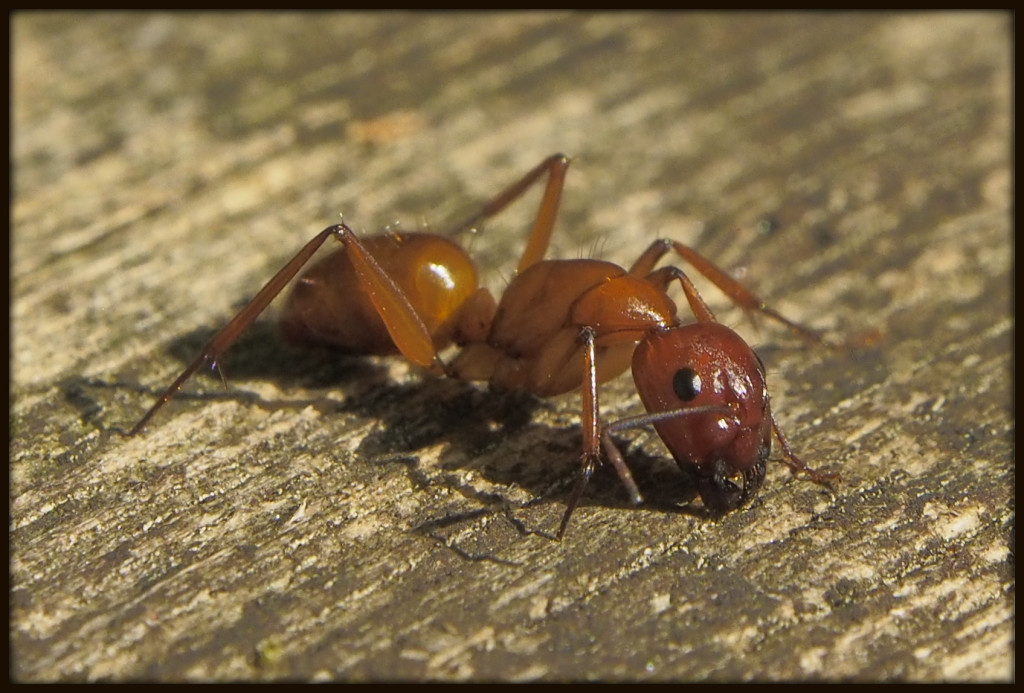
Continuing down the same stretch of boardwalk, I found a popular trailside perching area for Blue Dashers (Pachydiplax longipennis), a dragonfly species common in the Eastern United States.
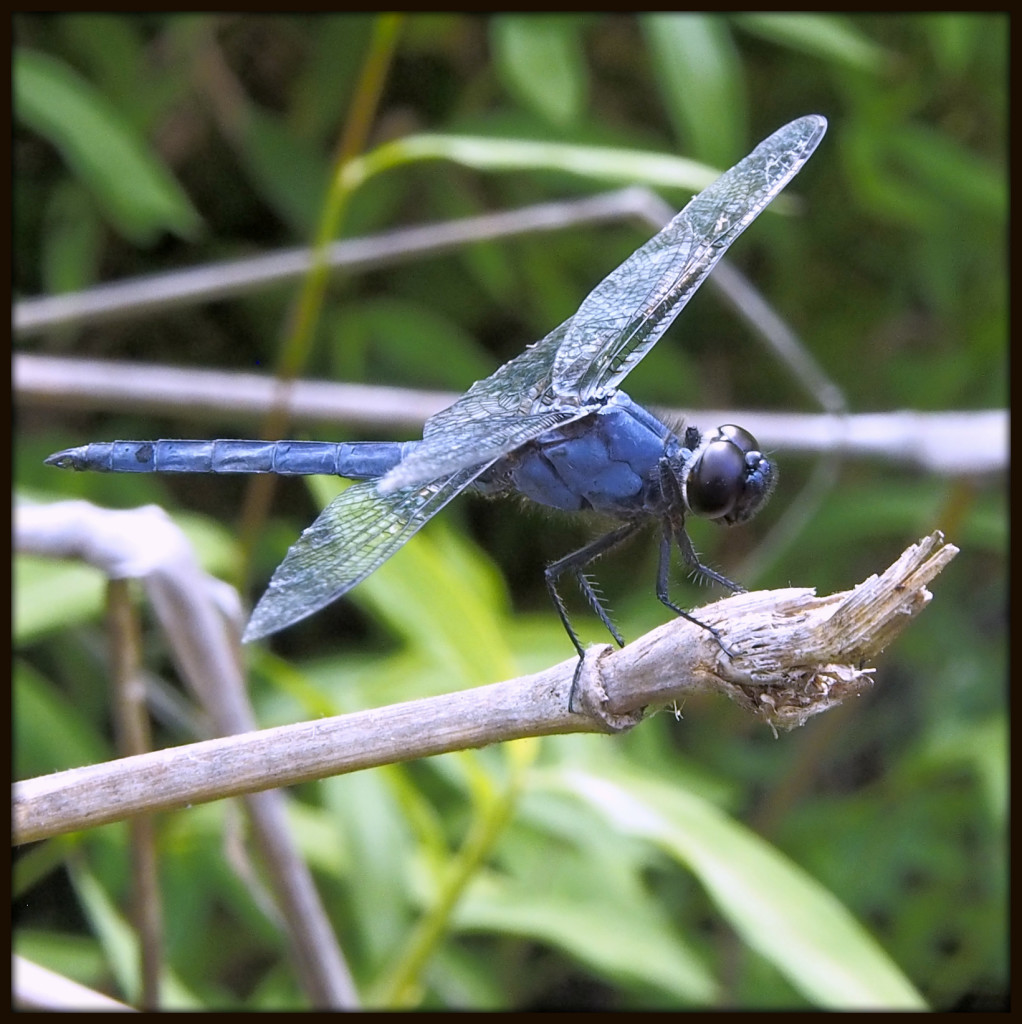
I try to be an equal-opportunity photographer, including a mix of good, bad, and ugly. When it comes to flies, though, I often hesitate. I am proud to say that I photographed this fly and added it to this blog, all the time thinking it was a vicious deer fly. Now I have to revise my opinion of this creature. According to folks at BugGuide on Facebook, it is actually a member of the family Bombyliidae, or bee flies. It is quite possibly Xenox tigrinus, or another member of that genus.

Further along, my next discovery was of another Blue Dasher willing to be photographed (the dragonflies were everywhere, but most darted too quickly from spot to spot, and/or had perches that were out of my camera’s macro range). This is my favorite dragonfly portrait of this particular outing. But I will be back again soon.
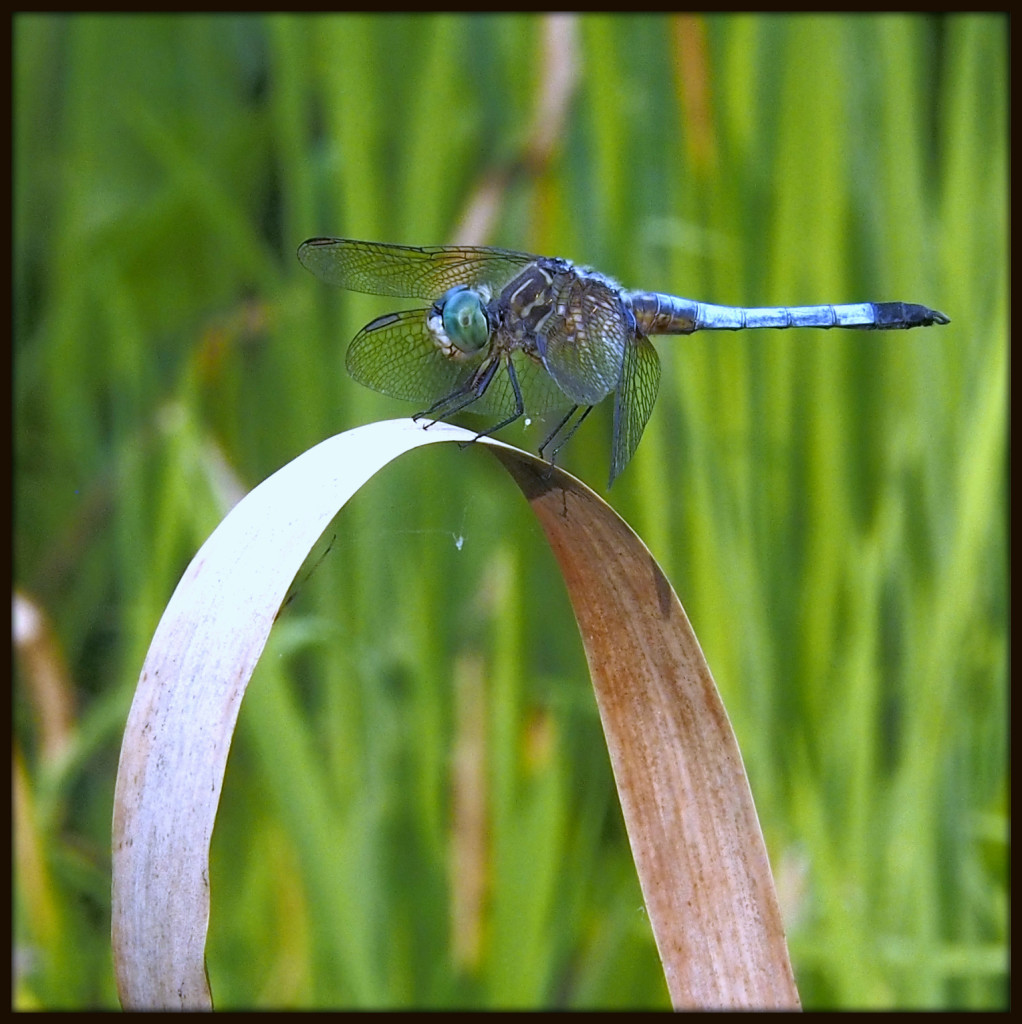
Stepping onto terra firma once again, we immediately saw this female Eastern Box Turtle (Terrapene carolina) in the path ahead. Valerie estimates her age at 75 to 100 years, and suspects that she may have been in search of a suitable location for laying eggs.

A short side spur led up the ridge, gaining about twenty feet in elevation and offering a view out over the wetland. In a tree hollow near the top, I glimpsed this insect, which was reluctant to be photographed. It is probably a Brown Lacewing (family Hermerobiidae).
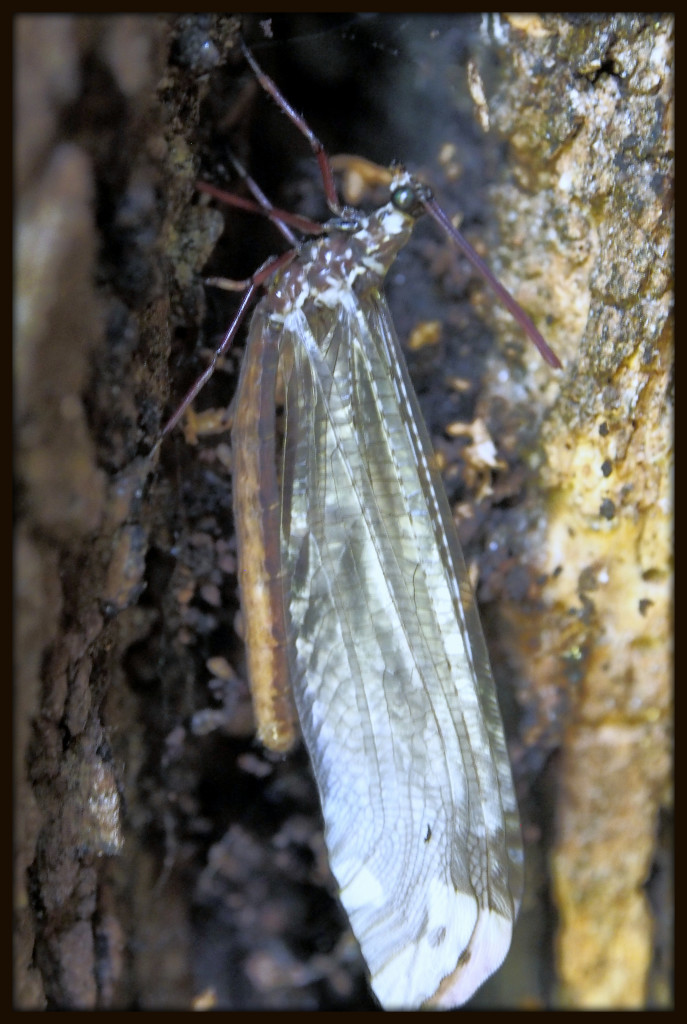
After so many photographs of insects (particularly dozens of dragonfly shots, nearly all Blue Dashers), I paused to take a couple of wetland plant photographs. The first one, I admit, I took because of all the Least Skippers feeding on it. The white globe of tiny flowers turns out to belong to the Buttonbush (Cephalanthus occidentalis). Now that I have a name for the flower, and appreciate how unusual it is, I ought to go back and photograph it properly!
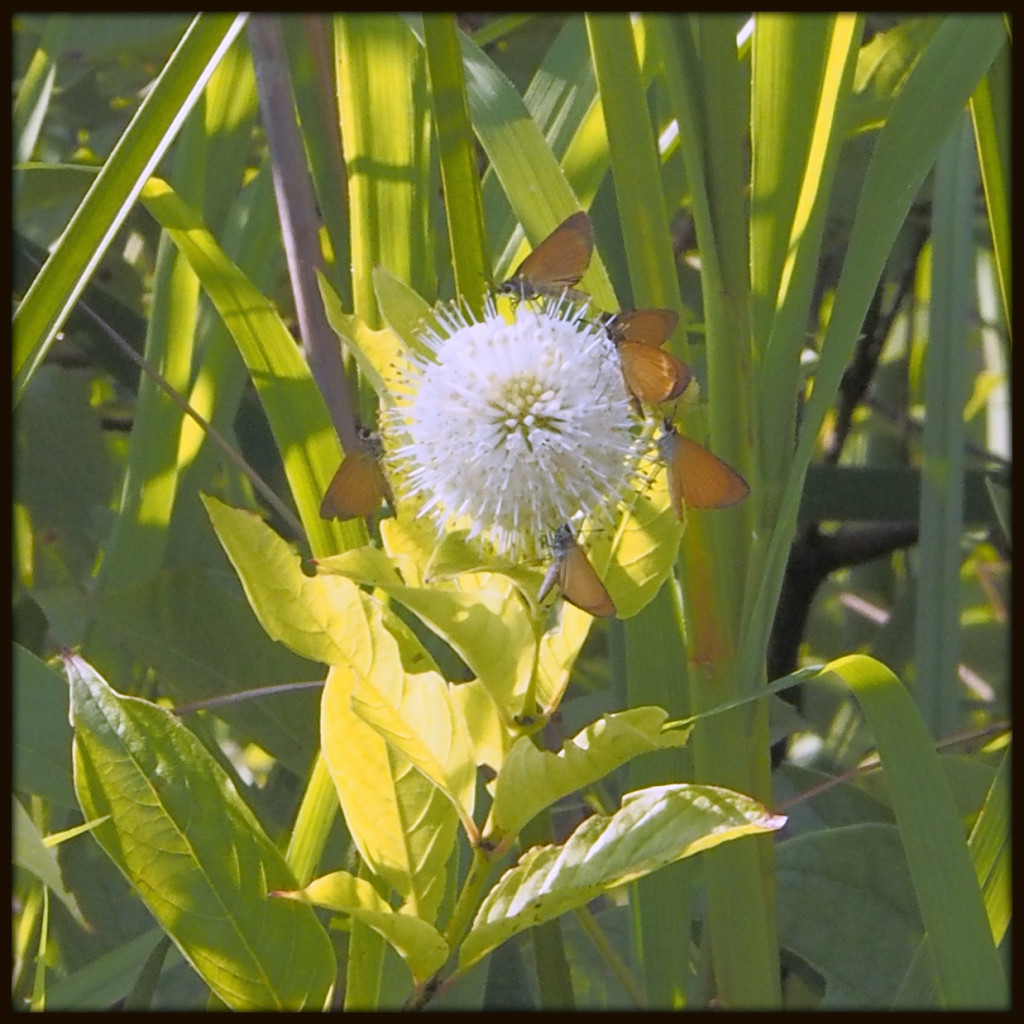
At last, a photograph simply in appreciation of the late afternoon sunlight shining through the underside of a leaf — in this instance, Common Arrowhead (Sagittaria latifolia).

On one such Arrowleaf, an Ebony Jewelwing damselfly (Calopteryx maculata) was perched. Although these damselflies are often quite timid, this one allowed me to get quite close with my macro lens.
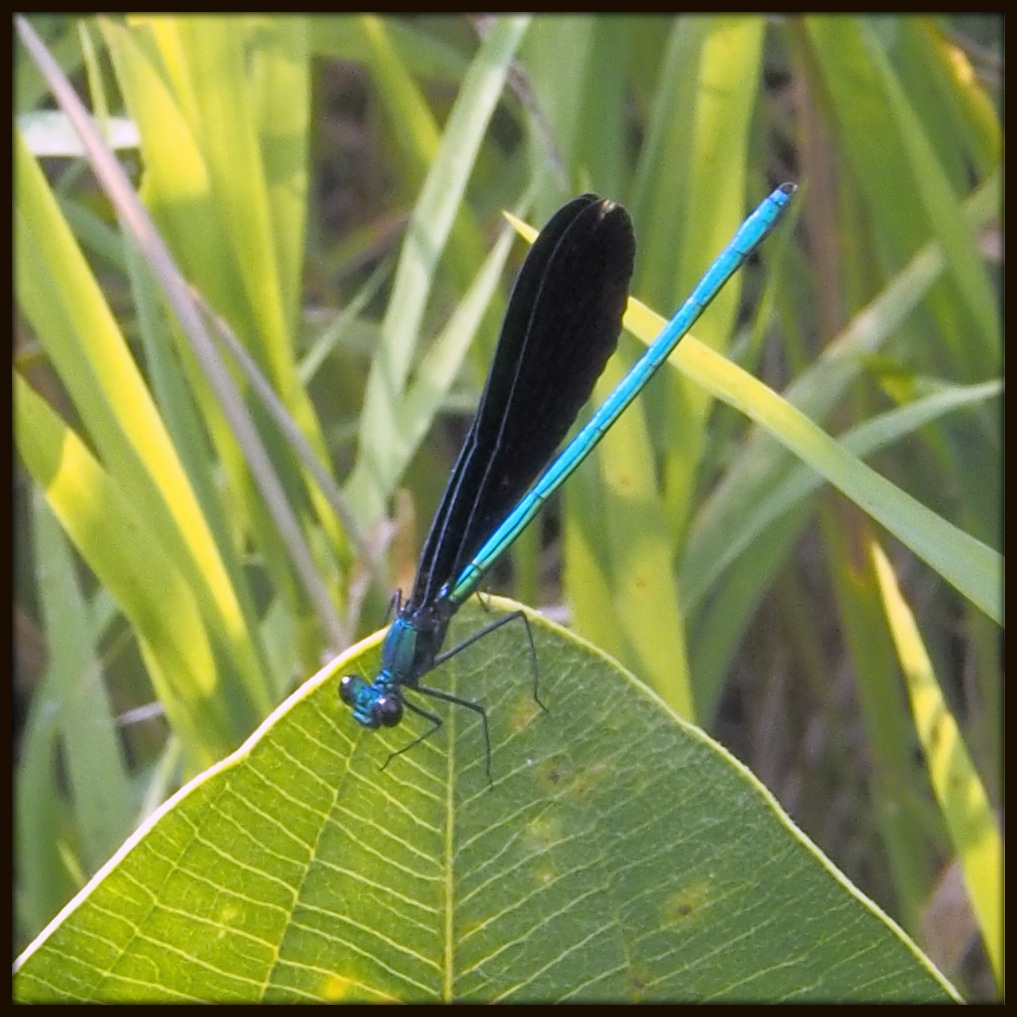
On a couple of occasions, the damselfly opened its wings for just a moment. I caught this once, but my 1/30-second exposure was too slow to avoid some blur to the wings.

Nearing trails’ end, I paused to enjoy the reflection of wetland plants and dead branches in a pool.
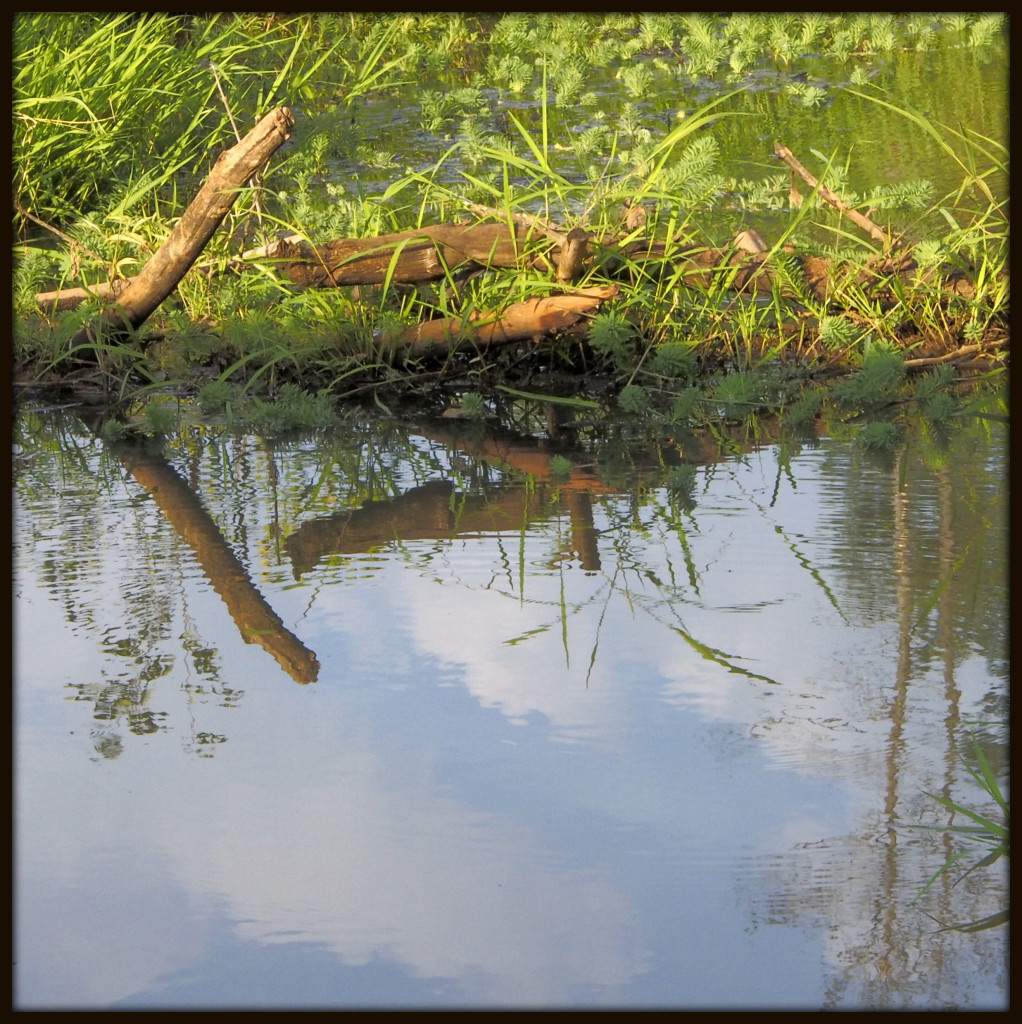
Just before the final section of boardwalk on the main loop trail, I saw an Eastern Gray Squirrel (Sciurus carolinensis)doing a bit of late-day feeding.
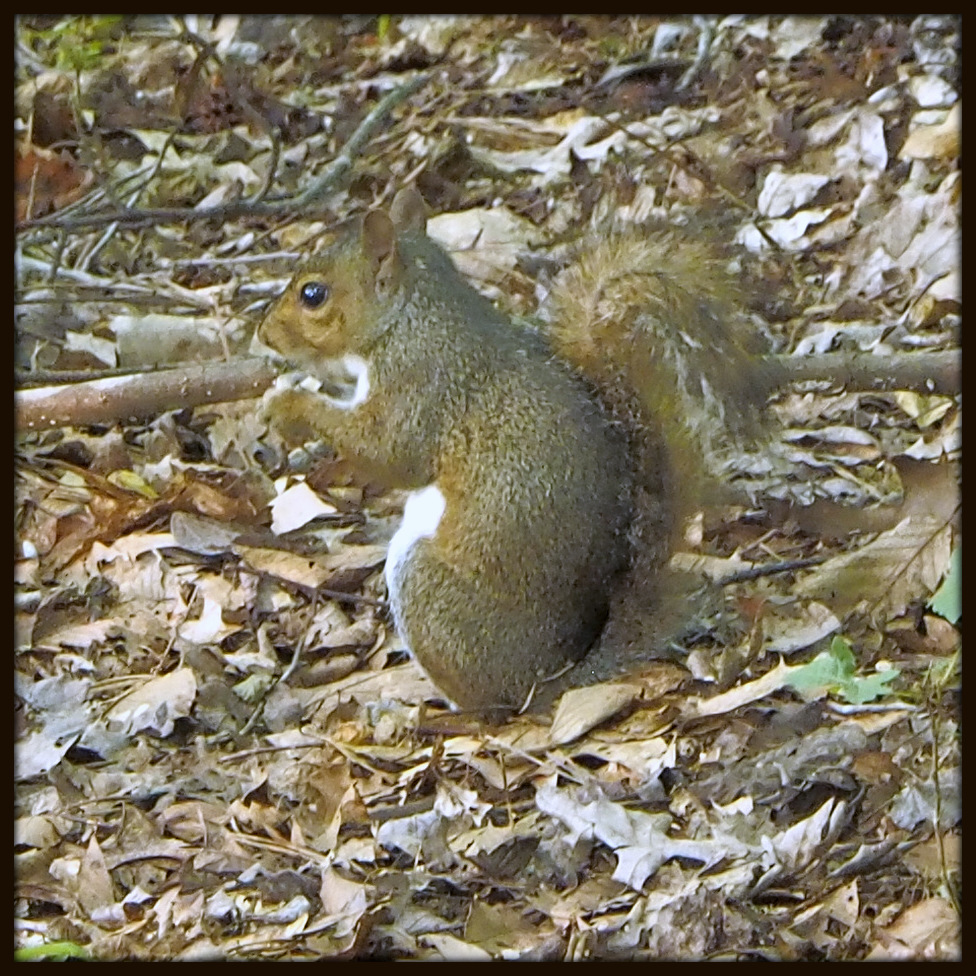
My ramble through Newman Wetlands took over two hours. In addition to the main loop, I also walked a few of the upland trails. There, wildlife was less abundant (or, at least, much less readily apparent). However, the sunlight through the trees afforded several stunning forest landscape photographs. These will be included in a Part Three post later today.
On a hot and brightly sunny mid-afternoon, I captured this hoverfly resting for just a moment on a sweetgum leaf. I enjoyed watching it hover in midair, and imagined taking its picture in flight — ah, well, that is for another day. A bit further down Piney Woods Church Road, I glimpsed another one, busily gathering nectar from the ever-blooming daisy fleabane.

I arrived at Piney Woods Church Road this morning a bit bleary after a late night tutoring and grading online students in the universities where I teach. I was hopeful that something fascinating would come my way to photograph. I am still figuring out my new macro lens, and I strolled up and down the road, in search of subjects. A small gold fly was somewhat obliging, but otherwise, there was nothing to explore but green leaves. I never tire, though, of the patterns of light and shadow on leaves, particularly when they are backlit early and late in the day. So I wandered about, figuring out manual focus on my lens and taking lots of pictures of leaves. My favorite of the lot is the one below, a close-up of two leaflets of poison ivy. The space between them evokes a river as seen on a satellite image, with the leaflets forming the adjacent land.
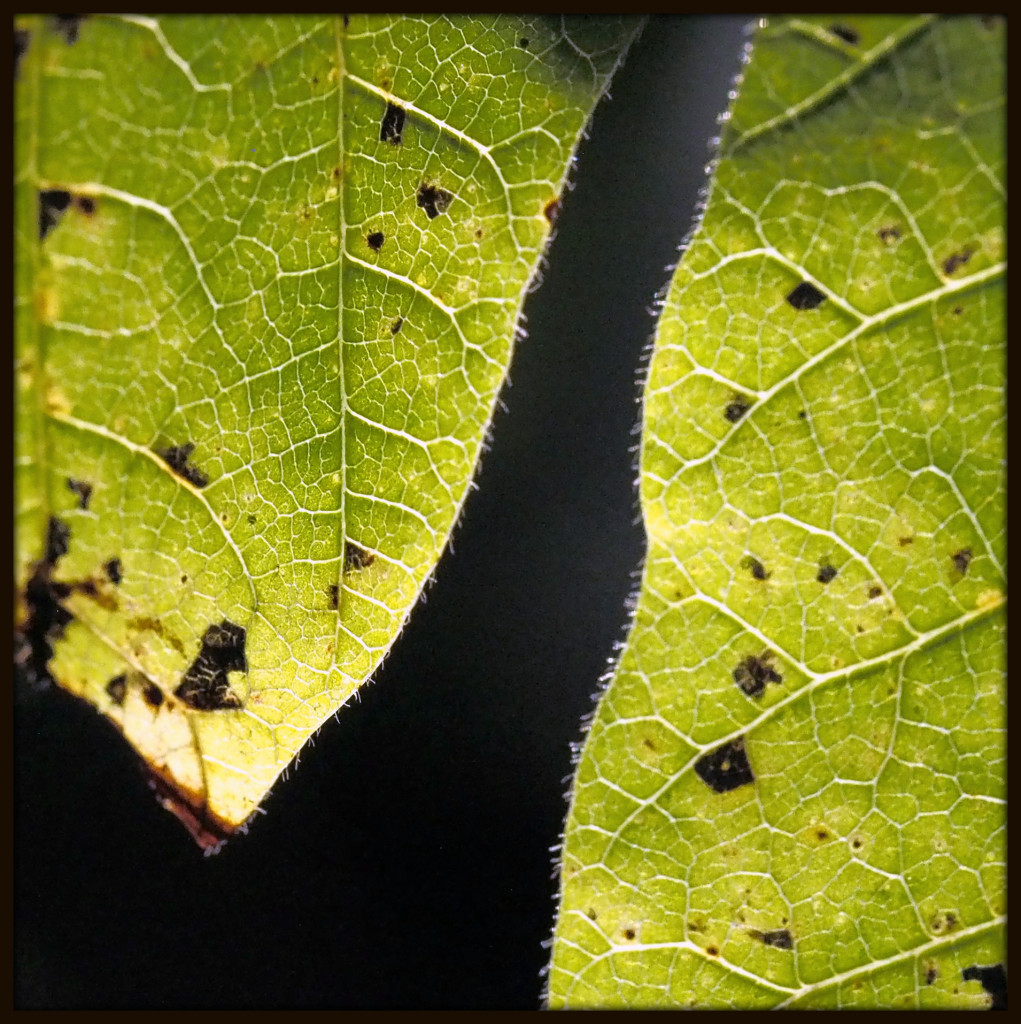
This afternoon, I slipped my 12-50 mm zoom lens back on the camera, as a respite from Lensbaby, and headed off down Piney Woods Church Road. It was a brutally humid late afternoon, and I felt like I was leaving a trail of perspiration behind me as I walked up to Hutcheson Ferry Road and back again. On my return, I paused to take a few photographs of ripening wood oats beside the roadway. The afternoon light shone through them beautifully, yielding this image.

On my return from Piney Woods Church Road today, I paused along the driveway to photograph an immense American beautyberry bus (Callicarpa americana) in bloom. A Georgia native that I have seen many times further north in the state and obtained from a native plant nursery a few years back, it has taken well to our yard. I think this photograph captures the way the Lensbaby Sweet 35 optic can produce a pleasant blur in an image.
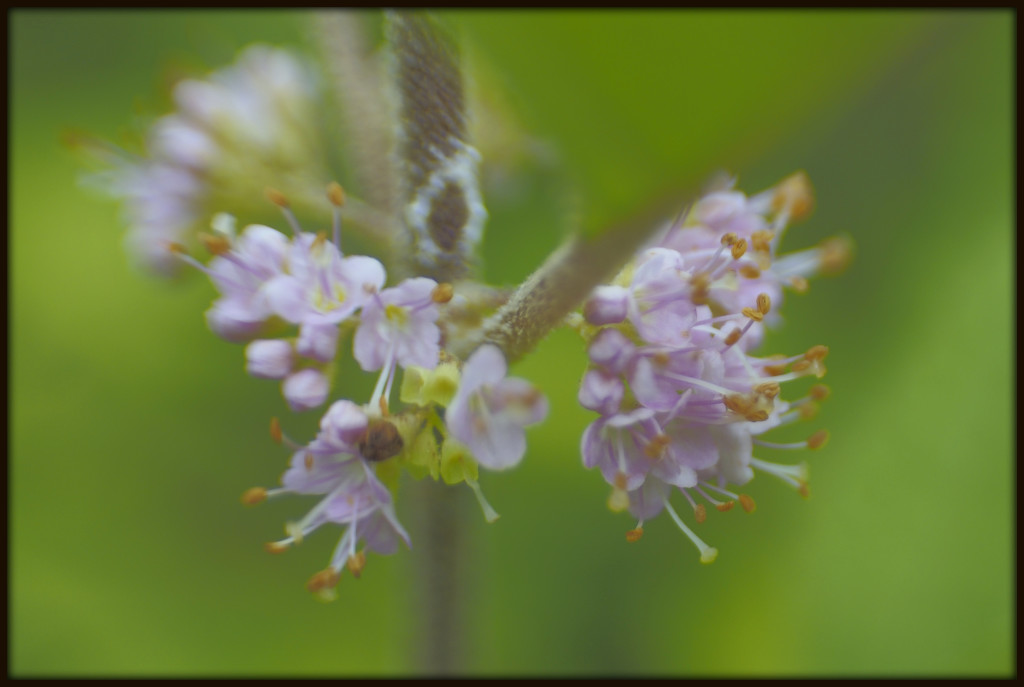
I set out along Piney Woods Church Road this afternoon after a downpour. The sky was still partly cloudy, roadside plants still decorated with water droplets. Inevitably, I was drawn to possible water images everywhere. This particular photo captures the brilliant red of a muscadine grapevine, a single droplet suspended from its tendril, a watery mirror in which it is reflected.
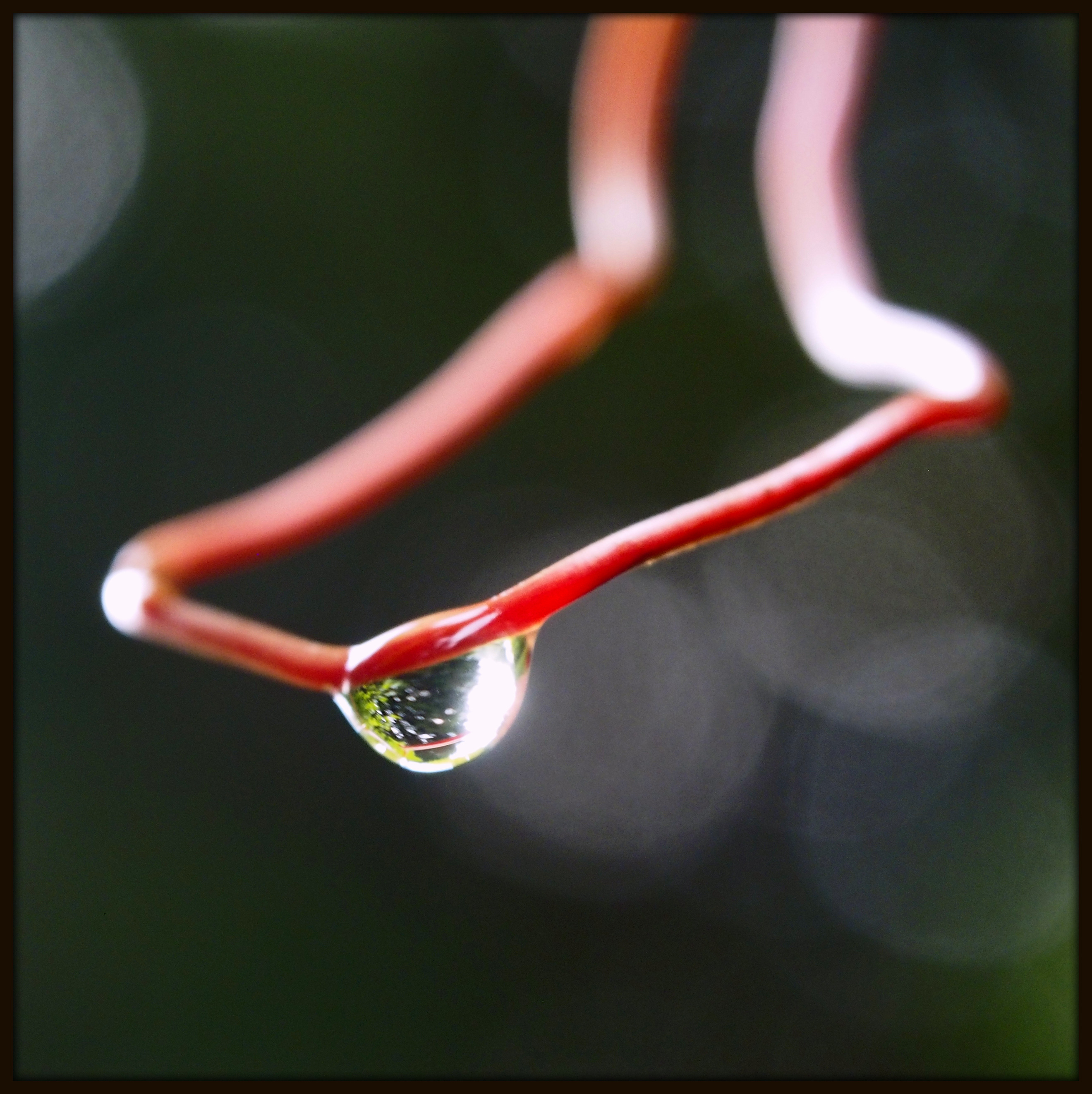
Fruits are developing on a native persimmon tree (Diospyros virginiana ) shading the roadside along Piney Woods Church Road. Future food for deer, foxes, and possibly even me as well.
